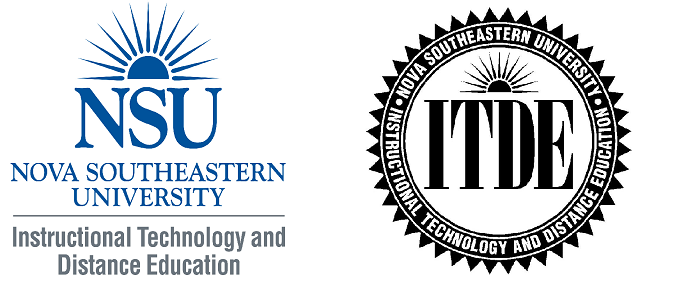Title
Distance Education in Portugal – Interview with Dr. Pedro Reis
Publication Date
1-1-2010
Abstract
Dr. Anymir Orellana of the ITDE faculty interviews visiting Portugese professor Dr. Pedro Reis- Fernando Pessoa University.
NSUWorks Citation
Orellana, Anymir and Reis, Pedro, "Distance Education in Portugal – Interview with Dr. Pedro Reis" (2010). Chapter 1: Foundations of Distance Education. 12.
https://nsuworks.nova.edu/tld_ch1/12
COinS



Comments
This is a rough transcript it might be useful for some students in the future. Interview with Pedro Reyes:
Portugal, His wife is an economist He works for Fernando Pesoa University. His degree is in Portuguese and French, he has a master's degree in comparative literature and his dissertation was on cypher literature. He has done some post-doc work on elearning.
He describes his work as being anchored in four corners: language, literature, pedagogy and technology. He is an "auxiliary" professor (associate?) and pedagogic coordinator.
His university uses Sakai for its course management system CMS. It is an open source elearning platform used by a consortium of universities including Berkeley, Indiana, MIT and Stanford.
It was conceived by educators and the open source means there is some reduced cost in licensing its use. "It is responsive to our needs, reliable and user friendly and open to cooperate so we can contribute.
A member of my university won an award for developing a tool, which was offered to the Sakai community. The tool provides feedback using data about how teachers and students are using the system. For example, how often the system is used.
We provided it to the universities that use Sakai and it was developed by the computer science department. We've been using Sakai since 2004
Q: What are the similarities and differences between distance ed in Europe and the USA?
DE in the USA is very important because the USA is a big country. Portugal is a small country. education is generally a local activity done face to face. We value contact between teachers and students. This is a geographical and historical factor that controls the situation.
This is changing.
Improvements in teaching is encouraging political support for DE. Students approach us asking if they can register for our courses. Social responsibilities (family) and work that doesn't allow them to attend face to face classes. We feel the demand from the public. We saw the need from the public and we focused initially on the technical needs.
QUESTION: What are differences between your university and Nova?
DE has been an important activity for NOva. My university is a traditional university with face to face classes. We adopted Sakai in 2004 [so the experience with DE is less than 8 years]. It was used as a supplement for face to face classes with a few blended learning delegations in the north of Portugal and Las Palmas in the Canary Islands. We have students who are far from our facilities. this gave us an opportunity to create blended learning. the faculty flies to Las Palmas and the other part is delivered by Sakai.
We have a new phase to implement to create totally online courses. We want especially to offer master and doctoral programs. We can reach a larger audience with this strategy to reach Portuguese-speaking countries like Brazil, Angola and other African countries. Partnerships are important for us. Similar links with other countries. In other similarities with Nova, we value a close relationship between teacher and student. Flexible templates for instructional design. We used technology in a smart way, when it proves necessary. [they don't use it just for the sake of using technology] there are so many tools available.
Question Pedagogy vs. technology, where is the focus?
We have focused on the technology to make the system more reliable and user friendly and transparent. It is so easy now to use mobile phones that really you don't consider the device. You are less and less aware of the device, we pay less attention to the actual communication device [and more on making the communication]. We focus only on using the device. In the same way, technology in online experience is becoming the same way and the device is less and less of an issue. Sometimes technology is a barrier to communication, something that provides separation. With a program like Eluminate [the web classroom learning software] we see these barriers disappearing. About the Pedagogy: there is a variety of activities for instructional design. there is collaborative appeal to make reliable tools for assessment. They are well covered. Integration of classroom pedagogy in the online environment is effective. Related references (for more info about Sakai)
What does a Sakai interface look like? Is it similar to Blackboard?
Youtube video to show Sakai.